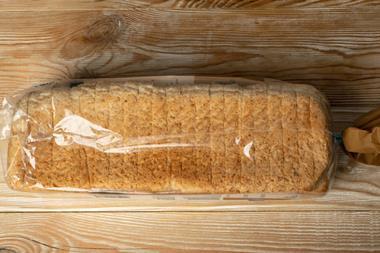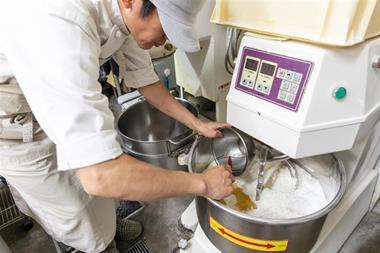
Bakers are 83 times more likely to suffer from work-related asthma than other professions, according to a study by dust and extraction firm Extraction Solutions.
As a result, the study ranked bakers and flour confectioners as the most dangerous occupation in the UK when it comes to workplace illness, ahead of vehicle paint technicians, plant and machine operatives and chemical process operatives.
Bakers are at particular risk of asthma owing to the inhalation of flour dust and enzymes, according to the Health and Safety Executive (HSE), which notes that dust clouds can arise from throwing flour, disposing of empty flour bags and brushing. Bag emptying, sieving, dough making, and dusting tasks all create a lot of dust.
They have an illness incidence rate 18.2 times the norm, Extraction Solutions added, when accounting for dermatitis, mental ill health, musculoskeletal problems and sickness absence as well as asthma.
The statistics were collected from the HSE index of ill health and the dermatitis and asthma relative incidence rate ratio was calculated by dividing the rate per 100,000 by the average for each incidence.
The Federation of Bakers, which recently published revised guidance on dust control in bakeries, describes respiratory exposure to flour and ingredients dusts as one of the most significant occupational health risks in the bakery industry.
Bakeries were even targeted by the HSE in a dust inspection drive in 2019 which examined the measures put in place to protect workers’ lungs from the likes of flour dust.
“Cooks, bakers, hairdressers and beauticians will often forgo the necessary PPE as the risk isn’t necessarily an immediate threat to life. However, over time the contact with and inhaling of low-risk chemicals and irritants will eventually result in the higher rates of incidents seen in these results,” Extraction Solutions said.
“Overall, these statistics emphasise that workers and employers need to stay vigilant of any potential risks in the workplace and have the necessary extraction systems in place. Length of exposure should also be just as important as the immediate harm posed by a chemical or irritant when evaluating the safety of your workplace.”
To find out more about the risks of flour dust, read our feature: ‘Flour dust: a danger that can’t be ignored’.
































No comments yet